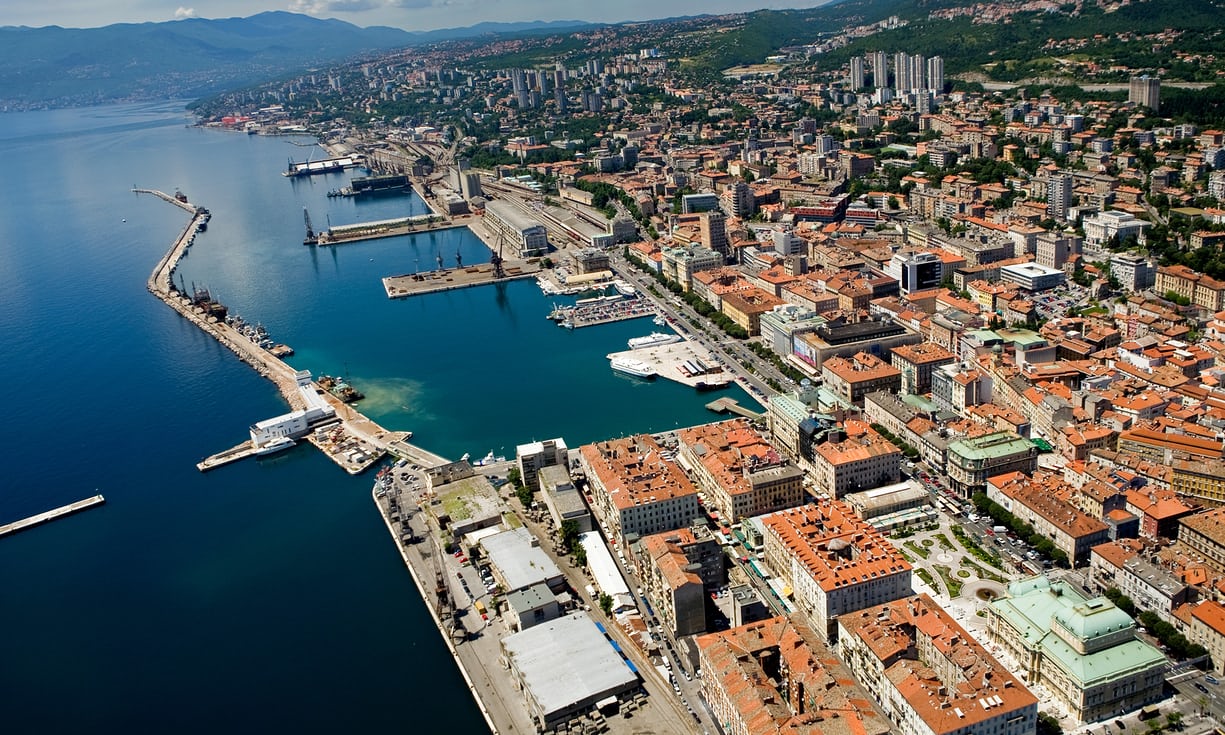BEAUTY OF EUROPE: RIJEKA, CROATIA with story
Croatia’s third largest city is so small that most Europeans probably would not have heard of it. Those who have may know it under a different, Italian name – Fiume – with both names meaning ‘river’. In its 19th-century heyday, Rijeka/Fiume was a multicultural port for the Hungarian end of the Austro-Hungarian Empire, a corpus separatum of the Hungarian crown, as it was on all sides surrounded by territory belonging to the Austrian side of the Empire. One can still find Rijeka’s coat of arms on the lavish building of the Hungarian Parliament, and on other public buildings around Budapest.
The late 19th century was a time of growth, entrepreneurship, migration, and industry. Land was reclaimed from the sea, the port was expanded, and public buildings were erected where there was once no more than beaches. The city was deeply international in ethnic composition, as the Italians, Hungarians, Croats, and many others arrived wanting to take part in the expansion. In this period, the city had one of the first industrial-scale oil refineries in Europe, and could boast the creation of the world’s first torpedo. The port served the industry of the Empire, and the migration to America. The most famous ship to travel that American route was the Carpathia, going from Rijeka to New York and back, remembered for being the first ship that came to Titanic’s rescue.
The end of the first world war, though, changed things radically. The city was demanded by Italy as part of its war spoils, and the collapsing Austria-Hungary was unable to fight for it. The representatives of the southern Slavs wanted to create a state from the Slovenian and Croatian-populated parts of Austria-Hungary, Bosnia, and Serbia, and while many of their demands were heeded at the post-war peace conference, there was no solution for multi-ethnic and contested Rijeka. The matter was bitterly fought, and the final decision was to create an independent city state, a solution that no one was particularly happy with. The city itself was divided, and the east side of the river in the city centre remained in the Kingdom of Serbs, Croats, and Slovenes, which would soon become known as Yugoslavia.
Independence only lasted a couple of months, and was replaced by one of European history’s oddest episodes, when the city was stormed and taken over by Gabriele D’Annunzio, Italian poet and proto-fascist revolutionary, and his armed supporters. The city was run as a revolutionary experiment, driving the economy to ruin and exacerbating the political and ethnic divisions. D’Annunzio and his fighters established the Italian Regency of Carnaro (named after the bay area Rijeka is in), but were more interested in revolutionary politics, poetry, and parties, than actually running a city state. Even though D’Annunzio and his men were expelled from the city after a year by Italian bombing, the city’s fate remained tied to the fascists, as independence in name only got replaced by annexation by Italy in 1924. The river dividing the city became the border of Italy and the Kingdom of Serbs, Croats, and Slovenes.
During the second world war, the city was occupied by German forces, and finally liberated by Croatian anti-fascists on 3 May 1945. Upon liberation, the bulk of its fascist and anti-communist citizens left, as did most of its Italians. The new communist Yugoslavia tried to restore the city’s industrial legacy, with mixed results. Similarly, the rebuilding process was patchy, with visible wartime scars on the city streets. The war in 1990s Croatia and the transition into the market economy and democratic politics precipitated the decline of the industrial economy, but did not cause physical destruction. If anything, the area was rid of military complexes. What were once military installations are now university grounds – an old military command building is now the Academy for Applied Arts.
The current city is built on legacies of all the totalitarian regimes that tore it apart, the shadows of those who left, the contributions of those who remained and those who arrived after the second word war in search of work. Hence the unusual, Italian-like-but-not-quite, intonation in the way we speak, the remains of Italian and Venetian vocabulary in our own, a handful of bilingual schools, and architectural features that clearly bear the marks of the empires that built them. As for the relevance of the city, the industry has waned and near-disappeared, replaced by hopes for a university-driven and culture-fuelled economy. The future looks uncertain, but definitely more peaceful than the past.